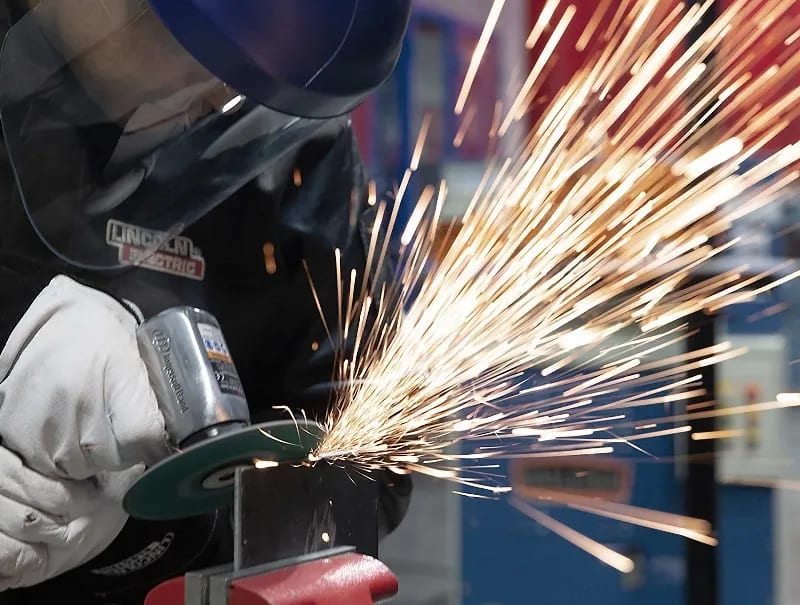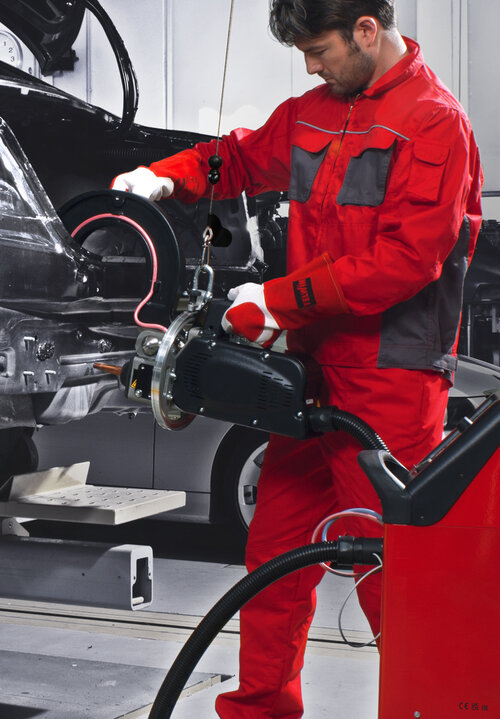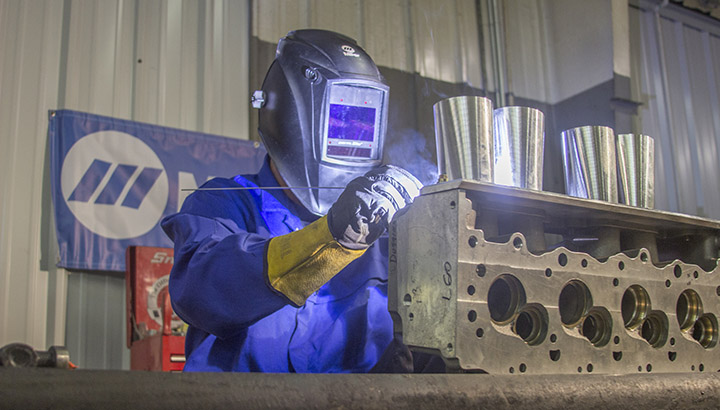Common Welding Repair Service Issues and Just How to Address Them Efficiently
Welding repair services usually experience a series of issues that can jeopardize the stability of the end product. Common troubles consist of insufficient infiltration, porosity, and imbalance, to name a few. Each defect presents distinct challenges that require details techniques for resolution. Comprehending these problems is necessary for welders aiming to improve their skills and end results. This conversation will certainly explore these usual welding repair concerns and efficient techniques to resolve them.
Insufficient Penetration
Inadequate infiltration takes place when the weld steel stops working to completely fuse with the base product, resulting in weak joints and possible architectural failings. This issue usually comes from inadequate heat input, incorrect electrode angle, or inappropriate welding speed. Welders might come across inadequate infiltration because of a miscalculation of the necessary specifications for a details product thickness or kind. Additionally, contamination on the base product's surface can hinder efficient bonding, exacerbating the issue. To address poor penetration, welders ought to assure suitable setups on their equipment and keep a clean job surface. Normal examination of welds is suggested to recognize any kind of shortages early, permitting for timely improvements and the prevention of compromised structural integrity in bonded settings up.
Porosity
Porosity is a common defect in welded joints that materializes as tiny gas bubbles trapped within the weld steel. This problem can compromise the honesty of the weld, leading to minimized toughness and prospective failing under tension. Fabrication. Porosity commonly arises from contamination, wetness, or improper welding strategies, which enable gases to escape into the liquified weld pool. To resolve porosity, welders need to guarantee proper surface area prep work, keep a tidy functioning environment, and use suitable welding parameters. Additionally, picking the best filler material and protecting gas can alleviate gas entrapment. Normal evaluation and screening of welds can aid recognize porosity early, ensuring timely restorative actions are taken, therefore maintaining the quality and integrity of the welded structure
Imbalance
Misalignment in welding can arise from numerous elements, including improper arrangement and thermal growth. Recognizing the origin is essential for reliable resolution. A number of adjustment techniques are readily available to straighten components and ensure structural honesty.
Reasons of Misalignment
Welding misalignment usually stems from a range of underlying concerns that can compromise architectural integrity. One primary cause is incorrect fit-up of elements before welding, which can result in spaces and unequal surface areas. Variations in thermal expansion throughout the welding procedure can likewise lead to distortion, specifically if the materials being joined have various coefficients of expansion. In addition, insufficient fixturing and clamping may fall short to hold elements firmly in position, leading to motion throughout welding. Poorly kept devices, consisting of welding devices and devices, might present incongruities in the weld bead, further adding to misalignment. Driver mistake, stemming from not enough training or experience, can likewise play a considerable function in developing misaligned welds.

Modification Methods Available
Resolving misalignment properly calls for a combination of corrective methods customized to the details concerns available. One usual technique is the use of jigs or fixtures to hold parts in the right placement throughout welding, making certain regular positioning. Additionally, preheating the products can help decrease distortion and improve fit-up. For substantial imbalance, mechanical realignment methods, such as using hydraulic jacks or clamps, can be utilized to correct the setting before welding. Post-weld warmth treatment may additionally be essential to ease stresses triggered by misalignment. Ultimately, cautious evaluation and adjustment throughout the configuration stage can protect against misalignment issues from coming to be considerable problems, advertising a smoother welding procedure and enhancing total architectural integrity.
Distortion
Distortion is a typical difficulty in welding that can occur from different factors, including irregular cooling and heating. Comprehending the reasons for distortion is essential for implementing effective prevention methods. Addressing this concern not just improves architectural integrity yet also improves the overall high quality of the weld.
Reasons for Distortion
When subjected to the intense warmth of welding, materials commonly undertake modifications that can bring about distortion. This sensation largely occurs from thermal expansion and tightening during the welding process. As the weld location warms up, the product expands; upon cooling, it acquires, which can produce internal anxieties. In enhancement, unequal home heating throughout a work surface can exacerbate these stress and anxieties, leading to bending or flexing. The sort of product likewise plays a substantial function; metals with varying thermal conductivity and coefficients of expansion might react differently, bring about uncertain distortions. Moreover, bad joint design and poor fixturing can add to imbalance during welding, raising the probability of distortion. Recognizing these causes is vital for effective welding repair service and prevention approaches.
Avoidance Techniques
Reliable prevention methods for distortion throughout welding concentrate on regulating warmth input and making sure appropriate joint layout. Maintaining a regular warmth input helps to minimize thermal expansion and contraction, which can result in distortion. Making use of techniques such as preheating the workpiece can likewise lower the temperature slope, promoting consistent heating. Additionally, picking appropriate joint layouts, such as T-joints or lap joints, can improve stability and decrease anxiety concentrations. Executing correct fixturing to safeguard the work surfaces in position better help in preserving alignment throughout the welding procedure. Staggered welding series can distribute warmth a lot more equally, preventing localized distortion. By applying these approaches, welders can significantly decrease the probability of distortion and enhance the overall top quality of their welds.
Splitting
Cracking is an usual concern encountered in welding repair services, commonly resulting from different variables such as incorrect air conditioning rates, product selection, or poor joint prep work. The occurrence of cracks can significantly jeopardize the integrity of the weld, bring about prospective failures during operation. To address this issue, welders have to initially assess the origin, making sure that materials work and appropriately chosen for the certain application. Additionally, managing the air conditioning price throughout explanation the welding process is crucial; fast air conditioning can generate anxiety and bring about splitting. Correct joint design and prep work additionally contribute to decreasing the risk. Implementing these approaches can boost weld quality and toughness, ultimately lowering the probability of cracking in finished weldments.

Incomplete Blend
A significant problem in welding fixings is insufficient blend, which occurs when the weld steel does not effectively bond with the base product or previous weld passes - Belgrade. This issue can lead to weak points in the joint, possibly compromising the stability of the welded structure. Variables adding to insufficient fusion include inadequate warm input, incorrect welding technique, and contamination of the surfaces being joined. To address this issue effectively, welders need to guarantee appropriate pre-weld cleaning and surface preparation, in addition you can try this out to readjust their welding criteria to accomplish adequate penetration and blend. Normal evaluation during the welding procedure can also assist recognize incomplete fusion early, enabling timely rehabilitative procedures to enhance the general high quality of the weld
Overheating
While welding repair work can improve structural integrity, overheating presents a significant challenge that can bring about material deterioration. Extreme heat throughout welding can alter the mechanical properties of steels, leading to decreased stamina, increased brittleness, and warping. This sensation is specifically important in high-stress applications where architectural integrity is extremely important. Identifying overheating can include aesthetic inspections for discoloration or distortion, as well as checking temperature throughout the welding process. To reduce the risks connected with getting too hot, welders ought to utilize suitable methods, such as managing warm input, readjusting travel speed, and utilizing ideal filler materials. In addition, applying more pre- and post-weld warmth therapies can aid bring back material homes and boost the total high quality of the repair service, making sure lasting performance and security.
Regularly Asked Concerns
What Are the Typical Signs of a Welding Flaw?

Just How Can I Evaluate My Welds for Top quality?
To check welds for quality, one can use visual evaluations, ultrasonic screening, and radiographic techniques. Each technique assures structural integrity, identifies issues, and verifies adherence to specified requirements, ultimately enhancing the reliability of the welded joints.
What Security Precautions Should I Take While Welding?
When welding, one ought to focus on safety and security by putting on suitable personal safety devices, guaranteeing correct ventilation, safeguarding flammable products away, preserving a clean workspace, and being aware of environments to avoid injuries and accidents.
Can I Fix a Weld Without Renovating the Entire Joint?
Repairing a weld without remodeling the whole joint is possible, relying on the damage (Montana Mobile Welding and Repair Belgrade Welding). Methods such as grinding, adding filler material, or utilizing a welding procedure can properly attend to certain imperfections while protecting the surrounding framework
What Tools Are Necessary for Efficient Welding Repairs?
Necessary devices for efficient welding repair services consist of a welding machine, cable brush, grinder, safety equipment, clamps, and filler materials. Each device plays an essential function in making sure high quality and safety and security during the repair work procedure. Porosity normally develops from contamination, dampness, or incorrect welding techniques, which permit gases to run away into the molten weld swimming pool. Poorly conserved devices, including welding makers and devices, might introduce inconsistencies in the weld grain, further adding to imbalance. When subjected to the extreme warmth of welding, materials typically undertake adjustments that can lead to distortion. Splitting is a typical issue come across in welding repair work, frequently resulting from different elements such as incorrect air conditioning rates, material selection, or insufficient joint preparation. A substantial problem in welding repair services is insufficient blend, which occurs when the weld metal does not appropriately bond with the base product or previous weld passes.